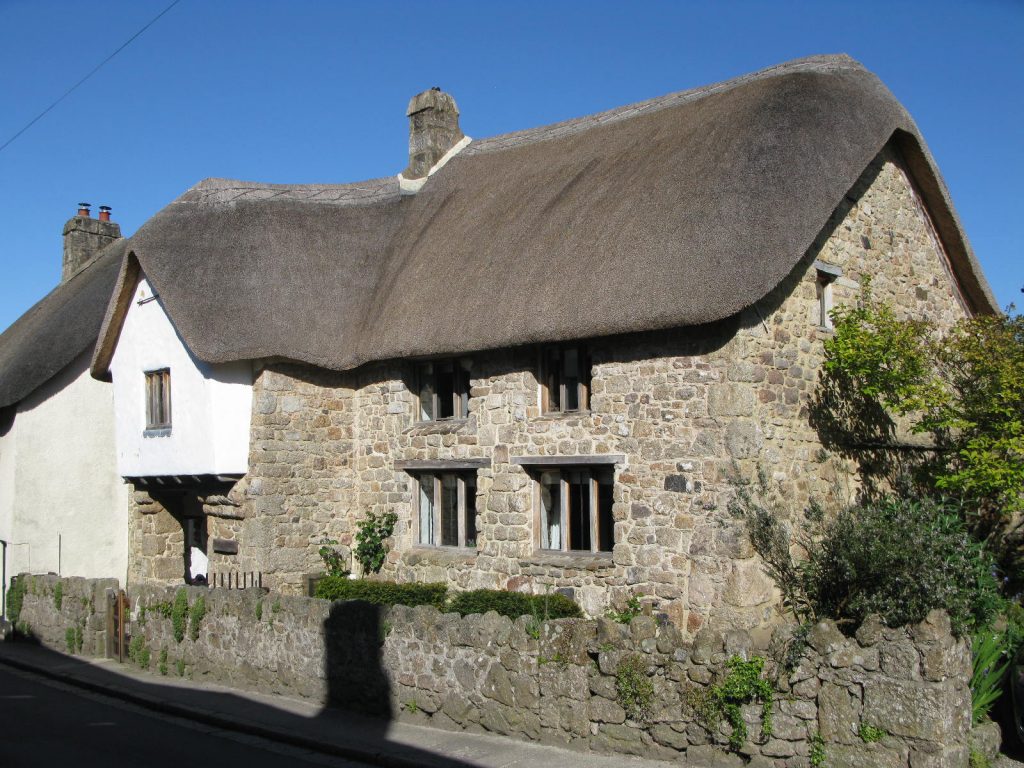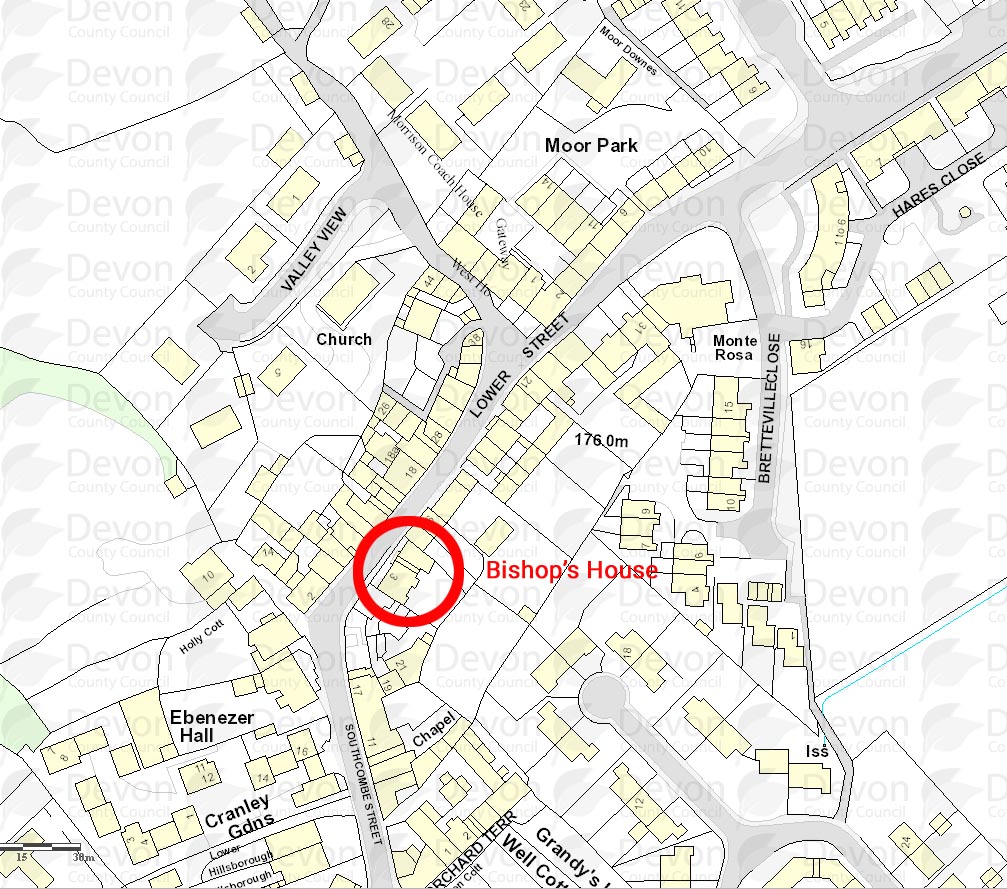The Bishop’s House is probably the oldest residential property in the town, with only the church being older. It is grade II listed and the Chagford Conservation Area Character Appraisal describes it thus:
With its thatched roof, mullioned windows and added two-storey porch, this is the most striking and best-preserved example of the earliest houses surviving in the town dating from the early 16th century.
It is so called because tradition has it that this is where the Bishop stayed, or at least dined, when he visited the church (which he would have done once a year for example in the 16th century). Other say it is associated with Bishop Branscombe who dedicated the Church in 1261.
It is a cross passage house in the style of a “Devon long house”, where the cross passage originally served to divide the accommodation between that part used by animals and that used by humans.
Note the oriel window on the upper floor over the porch; the porch is thought to be a 17th century addition.
Like many old houses it has a ghost story; here is an extract from Jane Hayter-Hames’ book A History of Chagford (1981, p 22)
Its present inhabitants have seen the ghost or spirit of a young woman, who seems to be dressed roughly in medieval costume, who was drawn forth by playing a mandolin in the garden on a summer’s evening. It must have reminded her of the music of her own times, perhaps the dulcimer or lute, so she must have come from a time when such instruments were heard in Chagford and from among the sort of people who might play them. An ecclesiastical family of some kind would provide this background, but equally a prosperous merchant might have brought the instrument home for his precious daughter. This is all conjecture and the young lady is not likely to tell us.

